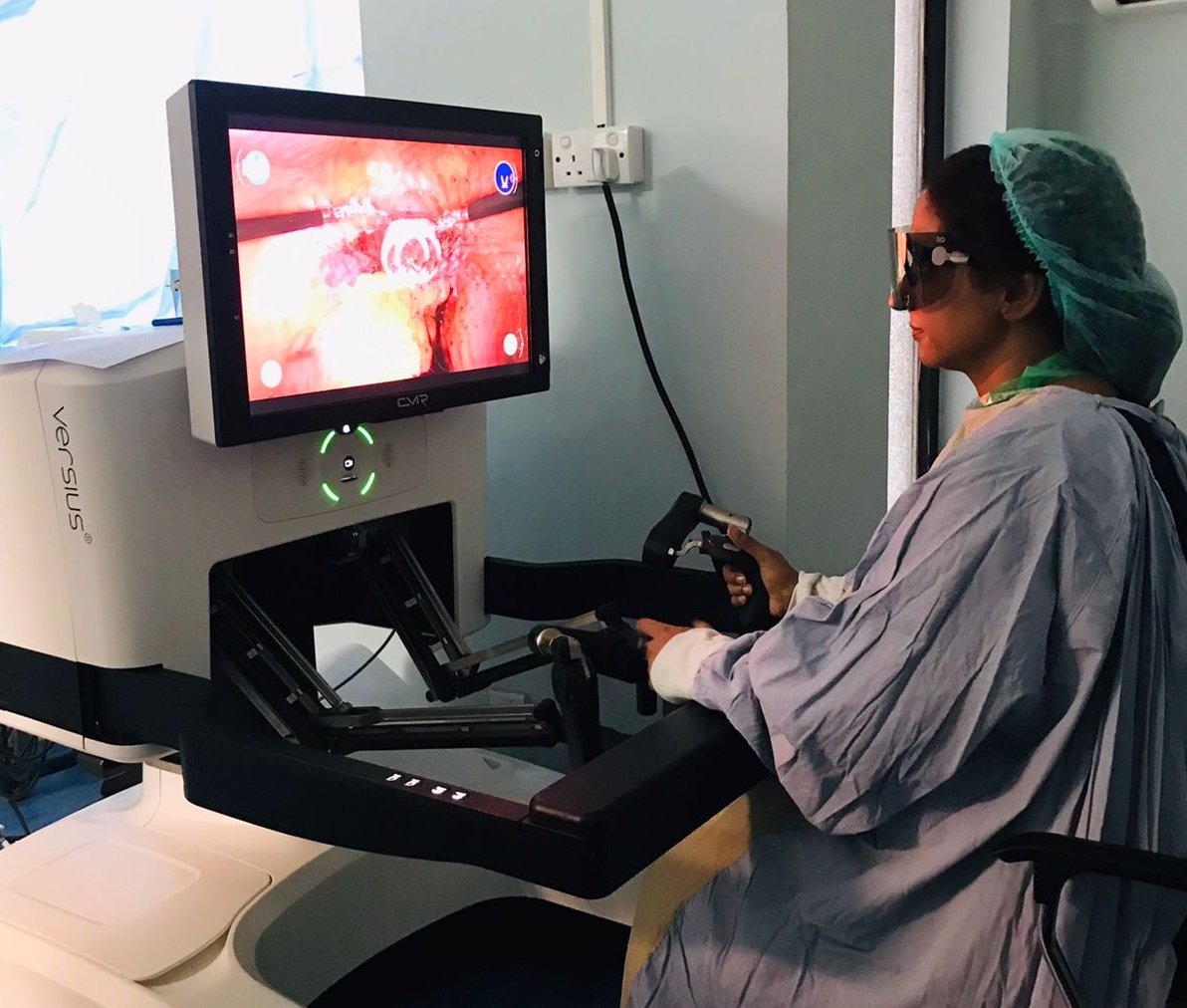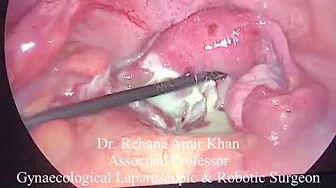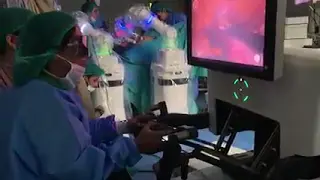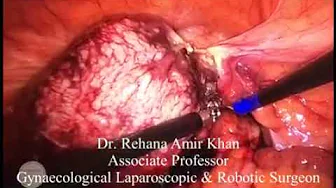Robotic Tubal Surgeries

ROBOTIC TUBAL SURGERIES
Advanced Robotic Tubal Surgery
By Expert Robotic Surgeons in Lahore
Robotic and minimally invasive surgery enables clinicians to diagnose and treat gynecological conditions through small incisions and precise control of surgical instruments, resulting in less tissue trauma, better outcomes, less pain, and faster recovery.
Robotic surgery is a minimally invasive procedure that uses a computerized robotic arm controlled by a surgeon to perform more precise operations than with human hands alone.
These surgeries can treat in better way tubal disease, endometriosis, uterine fibroids, ovarian cysts, cancer and other pelvic conditions that affect fertility.
Compared to more conventional treatment options, we only recommend that patients should undergo advance surgery with best outcome.
ROBOTIC TUBAL SURGERIES
We Are Specialist in Laparoscopic and Robotic Surgery
Today, most of these procedures can be performed endoscopically using small entry incisions, cameras, and special minimally invasive surgical tools. The technique reduces postoperative pain, recovery time, infection risk, and blood loss, better cure of disease process. For these reasons, minimally invasive surgery often results in better patient outcomes than traditional open surgical techniques.
In complex situations, robotic surgery achieves exceptional precision and a range of motion that surgeons cannot perform manually. Micro-surgical instruments are inserted through endoscopic holes up to half a centimeter, and small cameras are inserted through separate incisions. The doctor then controls the tool using a high-resolution video stream.
Computer-controlled measurements enable clinicians to zoom in and out to identify areas of interest visually. This provides high-resolution 3D visualization, enhancing your ability for better detection of disease with minute details.
Cases limited to intrauterine abnormalities can be performed without an incision. This minimally invasive procedure called hysteroscopy uses a tiny camera called a hysteroscope. A hysteroscope is a thin tube inserted through the vagina that allows the surgeon to use small surgical tools to access the uterus. Our tubal robotic surgeries include:
ROBOTIC TUBAL SURGERIES
Robotic Tubal reconstructive surgery
Robotic Tubal reconstructive surgery is a surgical procedure in which surgeons repair the fallopian tubes using a remote-controlled robotic surgical system. The robotic system consists of a patient-side cart (also called a robot) and a surgeon console. The robot sits next to the patient and has several arms attached. Then, each component has a unique surgical instrument and performs specialized surgical functions. However, the surgeon sits near the patient at the surgeon's console and watches the surgery on the monitor.
The surgeon performs the entire reversal procedure using the console located within the surgeon's console. Robotic tubal ligation reversal uses the small incision. A smaller incision usually results in less pain and a faster return to work than conventional tubal ligation, which uses a larger abdominal incision.
The robotic system offers a wide range of motion and surgical techniques than surgeons can achieve during conventional surgery.
Robotic Tubal Cannulation
It is a way to deal with blocked pipes. Tubal cannulation is inserting a thin catheter through the proximal part of the fallopian tube (the part closest to the uterus) to check and possibly restore the patency of the fallopian tube.
The catheter is guided by fluoroscopy (real-time X-ray imaging) or hysteroscopy (endoscopy of the uterine cavity) to the location of the fallopian tubes that drain into the uterine cavity. It then passes through the adjacent or proximal part of the fallopian tube. The blockage in the tube can then be opened using an inflatable balloon at the tip of the catheter.
Tubal intubation can be done immediately after an X-ray imaging method called hysterosalpingography. This method uses dye injected into the uterine cavity and fallopian tubes to assess the patency of the fallopian tubes. When a blockage is found, it can be removed using a tubal cannula.
Tubal intubation offers several advantages over surgical methods to treat blocked fallopian tubes, such as salpingostomy. It is non invasive and reduces the risk of complications associated with conventional surgery. The recovery period is also much shorter and can be done on an outpatient basis. However, anesthesia is required usually for this procedure.
Robotic Tubal Anastomosis
A salpingostomy can be performed on a stent within the tube through a 12 mm umbilicus with several small attachment sites. Thin wires (6-0 to 8-0) can easily be used to achieve tubal reflexology. Robotic cameras allow low-power magnification to improve the accuracy of suture placement, help determine tissue levels, and improve tubal re-approximation required for successful re-stoma.
Pregnancy rates after instrument immersion have been reported to be as high as 80%. Minimally invasive procedures are associated with lower pain, lower infection rates, and faster recovery than larger abdominal incisions. Regardless of the method used, the type of tubal ligation remains a critical factor in success, with Falope rings and Filshie clips providing the best chance of successful reversal. The Pomeroy method of tubal ligation offers different results. It depends on the location of the ligation and whether a tube of the same diameter can be used for the ostomy.
ROBOTIC TUBAL SURGERIES
Robotic Tubal Sterilization Reverse
Using robotic technology is a way to improve reproductive surgery outcomes. The potential of this advanced technology to expand the scope of minimally invasive (laparoscopic) procedures and reduce patient recovery time is prompting an increasing number of patients to consider robotic tubal sterilization reversal as a safe and effective method of restoring fertility.
Tubal sterilization reversal, also known as tubal ligation reversal, tubal recurrence, or simply tubal reversal, is a surgical procedure to restore a woman's fertility after a "tube ligation."
During a tubal ligation, the surgeon cuts each fallopian tube, then closes them by closing the openings of the passage with cautery, sutures, or a dressing. To reverse the process, the surgeon opens the blocked end of each tube segment and then reconnects the individual pieces.
The procedure of Robotic Tubal Surgeries
Robotic tubal reverse sterilization combines high-resolution 3D magnification, robotics, and small tools to improve reproductive surgeons' skills in reconstructing a woman's fallopian tubes.
Our well-qualified surgeons perform robotic intubation using CMR Surgical System. The system consists of a surgeon's console with a control panel and high-resolution display and a patient-side cart with a slender robotic arm operated by another surgeon and nurse.
Slim robotic arms and precision surgical instruments for robotic-assisted tubal ligation only require a small incision in the abdomen. There are four arms to choose from with wrist straps: one with a high-resolution 3D zoom camera, two for use as a surgeon's arm, and an optional component for tissue fixation.
The camera provides the surgeon with improved detail; the actual depth of field, panoramic views, and the extensive motion of the robotic hand allow for increased agility. This enhanced vision, precision, and flexibility offer significant advantages when gently rebuilding the fallopian tubes, helping to restore fertility safely.
These features are further enhanced by the unique ergonomic design of the surgical console, which helps relieve surgeon fatigue and mechanics that allow for continuous motion. The surgeon sits at a console not far from the patient and commands the robotic arm remotely. These simple, smooth movements, combined with the wrist function of the robotic arm, are the main advantages of robotic surgery over traditional minimally invasive surgery.
ROBOTIC TUBAL SURGERIES
Benefits of Robotic Tubal Surgeries
The miniaturization, more excellent range of motion, improved vision, and mechanical precision of robotic surgery has brought significant benefits to our reproductive surgery patients, including:




